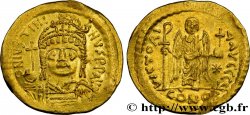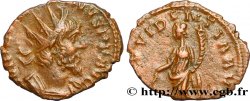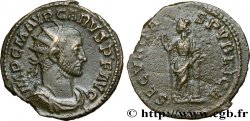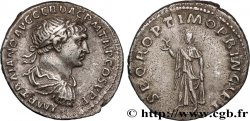Live auction - bmv_823388 - QUENTOVIC (WICVS IN PONTIO) Triens, monétaire ANGLVS I, type VIIIa
Чтобы принять участие в торгах, вы должны войти в систему и стать подтвержденным участником аукциона. Войдите, чтобы сделать ставку. Ваш аккаунт будет подтвержден в течение 48 часов. Не ждите до закрытия торгов, чтобы зарегистрироваться.Сделав ставку на данный товар, вы вступаете в юридическое соглашение на покупку выбранного товара и нажатием кнопки «Сделать ставку» подтверждаете принятие вами условий интернет-аукционов cgb.fr.
Ставка может бить сделана только в полном эквиваленте евро. Торги закроются согласно времени, указанному в описании товара, все ставки, сделанные после закрытия торгов, учитываться не будут. Не следует откладывать предложение вашей ставки до последнего момента, так как система может не успеть обработать вашу заявку, и ваша ставка не будет принята. Более детальную информацию вы найдёте здесь: FAQ по интернет-аукционам.
Все ставки победителей подлежат комиссии 18%.
Все ставки победителей подлежат комиссии 18%.
| Оценить : | 3 000 € |
| Цена : | Нет ставки |
| Максимальная предлагаемая цена : | Нет ставки |
| Конец торгов : | 06 June 2023 17:21:18 |
Тип Triens, monétaire ANGLVS I, type VIIIa
Дата: (VIIe siècle)
Монетный двор / Город: Étaples-sur-Mer (région d’)
Металл: gold
Диаметр: 12 mm
Ориентация осей монеты: 11 h.
Вес: 1,07 g.
Редкость: R3
Комментарии о состоянии
Triens avec des types bien centrés et complets. Hauts reliefs
Происхождение:
Monnaie provenant de la collection Philippe Schiesser
Лицевая сторона
Аверс: легенда: VICS FIT.
Аверс: описание: Tête à droite.
Обратная сторона
Реверс: легенда: ANGLO MONET.
Реверс: Описание: Croix potencée à double traverse, soudée sur une base hémi-hexagonale contenant une croix.
Комментарий
Monnaie très proche du n° 40, p. 226 de l’article de Jean Lafaurie sur les monnaies mérovingiennes de Quentovic (RN 1996). Les monnaies retrouvées ont permis de dénombrer neuf noms de monétaires sur près d'un siècle. Ces neuf noms "désignent vraisemblablement dix personnes, car il est possible de distinguer deux sortes de monnaies assez éloignées dans le temps", signées du même nom : Anglus". Notre monnaie appartient au premier monétaire portant ce nom. L'émission se termine avec une série de triens à l'effigie redressée et au revers une croix potencée. Les titres d’or de ces monnaies varient entre 55 et 62%. Les lettres sont gravées très géométriquement ; le M de Monet est en forme de "râteau" et les O sont losangés. Les monnaies du deuxième Anglus ont une écriture plus "continentale”. La datation, à partir de l'ensemble du monnayage, situerait Anglus I entre 625 et 635. Les critères de datation reposent sur la comparaison des styles, de la typologie et de la teneur en or fin.
Coin very close to No. 40, p. 226 of Jean Lafaurie's article on the Merovingian coins of Quentovic (RN 1996). The coins found made it possible to count nine names of coins over nearly a century. These nine names \\\"probably designate ten people, because it is possible to distinguish two types of coins quite distant in time\\\", signed with the same name: Anglus. Our coin belongs to the first coin bearing this name. The issue ends with a series of triens with an upright effigy and a cross potent on the reverse. The gold fineness of these coins varies between 55 and 62%. The letters are engraved very geometrically; the M of Monet is in the shape of a \\\"rake\\\" and the O are diamond-shaped. The coins of the second Anglus have a more \\\"continental\\\" script. Dating, based on the entire mint, would place Anglus I between 625 and 635. The dating criteria are based on the comparison of styles, typology and fine gold content.
Coin very close to No. 40, p. 226 of Jean Lafaurie's article on the Merovingian coins of Quentovic (RN 1996). The coins found made it possible to count nine names of coins over nearly a century. These nine names \\\"probably designate ten people, because it is possible to distinguish two types of coins quite distant in time\\\", signed with the same name: Anglus. Our coin belongs to the first coin bearing this name. The issue ends with a series of triens with an upright effigy and a cross potent on the reverse. The gold fineness of these coins varies between 55 and 62%. The letters are engraved very geometrically; the M of Monet is in the shape of a \\\"rake\\\" and the O are diamond-shaped. The coins of the second Anglus have a more \\\"continental\\\" script. Dating, based on the entire mint, would place Anglus I between 625 and 635. The dating criteria are based on the comparison of styles, typology and fine gold content.








 Cообщить об ошибке
Cообщить об ошибке Распечатать страницу
Распечатать страницу Отправить мой выбор
Отправить мой выбор Задать вопрос
Задать вопрос Consign / sell
Consign / sell










